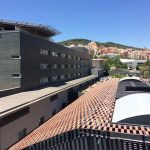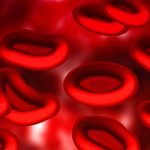
The Institute of Biomedical Research, IIB – Sant Pau, is participating in a study, published in the Journal of Clinical Medicine, which points to the immune response to high-density lipoproteins (HDL) as a pathogenic mechanism in the progression of the abdominal aortic aneurysm. The researchers of this study suggest that anti-HDL antibody levels may be a biomarker for the diagnosis and prognosis of this vascular pathology.
Abdominal aortic aneurysm (AAA) is a disease characterized by the dilation of the abdominal aorta. It is an asymptomatic condition and difficult to diagnose in time, which can progress to the rupture of the artery, a fatal event in most cases. Therefore, it is a key challenge for research to find biomarkers that contribute to an earlier diagnosis, improving the monitoring and prognosis of the disease.
In this field, new research published in the Journal of Clinical Medicine has demonstrated the presence of circulating antibodies to high density lipoproteins (HDL) in patients with abdominal aortic aneurysm (AAA). The results, from researchers at the University of Oviedo, from CIBER Cardiovascular Diseases (CIBERCV) at the Instituto de Investigaciones Sanitarias Jiménez Díaz, and from CIBER Diabetes and Associated Metabolic Diseases (CIBERDEM) at IIB-Sant Pau , suggest that the levels of these anti-HDL antibodies could have potential value as a diagnostic and prognostic biomarker. Furthermore, they point out that the immune response to HDL could be a key pathogenic mechanism in the evolution of this blood vessel disease.
Good’ cholesterol, key to preventing aortic dilatation
AAA is usually characterized by the accumulation of cholesterol and immune cells in the aortic wall, which trigger an inflammatory immune response. Therefore, HDLs play a key role in preventing this accumulation of cholesterol on immune cells (mainly macrophages) in the artery wall.
Previous studies by the CIBERCV and CIBERDEM groups had shown that low levels of HDL cholesterol are associated with the presence of AAA and that there are modified forms of HDL in the aneurysmal wall. However, the exact mechanisms that lead to the decrease in HDL levels remain unknown. On the other hand, the research team from the University of Oviedo had previously demonstrated the presence of antibodies generated against HDL (anti-HDL) in several autoimmune diseases.
This new work, with the support of “la Caixa” Foundation, focused on investigating the presence of anti-HDL antibodies in patients with AAA and their possible association with the clinical characteristics of this disease. To this end, the circulating levels of antibodies directed against HDL (anti-HDL) in plasma and tissues of 488 patients diagnosed with AAA and 184 healthy controls were analysed.
Anti-HDL antibodies, potential diagnostic and prognostic marker
The results obtained demonstrated an increase in the levels of these anti-HDL antibodies in plasma from patients with AAA, independent of risk factors. Likewise, anti-HDL antibodies were negatively associated with HDL cholesterol levels and positively with aortic size, a marker used to follow the evolution of these patients. Both results point to the potential value of this indicator as a biomarker for both diagnosis and prognosis of this vascular disease.
In addition to these data, the authors detected the presence of these antibodies in the arterial wall of patients with AAA, suggesting an immune response to HDL in the aneurysmal wall as one of the mechanisms of progression of this disease.
Regarding its usefulness as a biomarker, José Luis Martín Ventura, CIBERCV researcher at the Instituto de Investigación Sanitaria Jiménez Díaz, states that “the presence of these antibodies may provide additional clues for understanding risk stratification in these patients, which represents a key aspect in clinical treatment”. On the other hand, Javier Rodríguez Carrió, first signatory of this article, points out that “antibody detection is a relatively simple, objective, reproducible and feasible technique in most hospitals, which provides additional advantages over more sophisticated and less accessible techniques”.
However, the researchers point to the need for further studies in this field: “From a clinical point of view, further research is warranted to elucidate the exact role of anti-HDL antibodies as biomarkers for patient stratification and clinical management, as well as their contribution to the mechanisms of abdominal aortic aneurysm,” they conclude.
Reference article:
Rodríguez-Carrio J, Lindholt JS, Canyelles M, Martínez-López D, Tondo M, Blanco-Colio LM, Michel JB, Escolà-Gil JC, Suárez A, Martín-Ventura JL. IgG Anti-High Density Lipoprotein Antibodies Are Elevated in Abdominal Aortic Aneurysm and Associated with Lipid Profile and Clinical Features. J Clin Med. 2019 Dec 26;9(1). pii: E67. DOI: 10.3390/jcm9010067





















